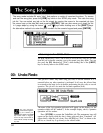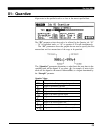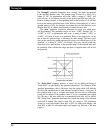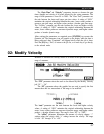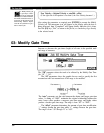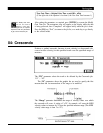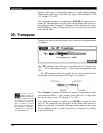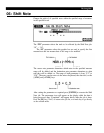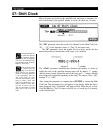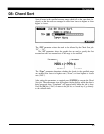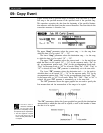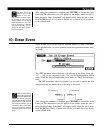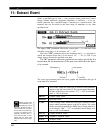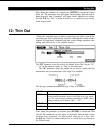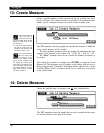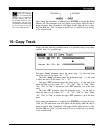
07: Shift Clock
The Shift Clock job will
not shift data beyond
the specified measure
range. Events near the beginning
and end of the specified range
may therefore sound “bunched”
together in some cases.
Since the Move Clock
job actually shifts the,
timing of all notes and
other events in the specified
measures forward or backward,
it can significantly alter the
“feel” of the song. You could
move the notes forward (“+” set-
tings) to create a more “laid
back” feel, or backward (“–” set-
tings) to produce a more “driv-
ing” feel. Of course, you can
also use Clock Move to correct
timing that is off in the first
place.
Moves all notes and events in the specified track and range of measures for-
ward or backward by the specified number of clocks (96 clocks per 1/4 note).
The
“TR”
parameter selects the track to be affected by the Shift Clock job:
“01” ...
“16” for the sequencer tracks, or “Tmp” for the tempo track.
The
“M”
parameters above the graphic bar are used to specify the first
measure:beat and last measure:beat of the range to be modified.
The
“Clock”
parameter determines the direction and number of clocks by
which the notes in the specified measure range will be shifted. “+” settings
shift the notes forward (toward the end of the song) and "–" settings shift the
notes backward (toward the beginning of the song). The range is from “-999”
through “0” to “+999”.
After setting the parameters as required press
[ENTER]
to execute the Shift
Clock job. The metronome icon will appear on the display while the data is
being processed, then “Completed” will appear briefly when the job is done.
Press the
[F6]
key (“Exit”) to return to the job list, or a mode key to go directly
to the selected mode.
42



